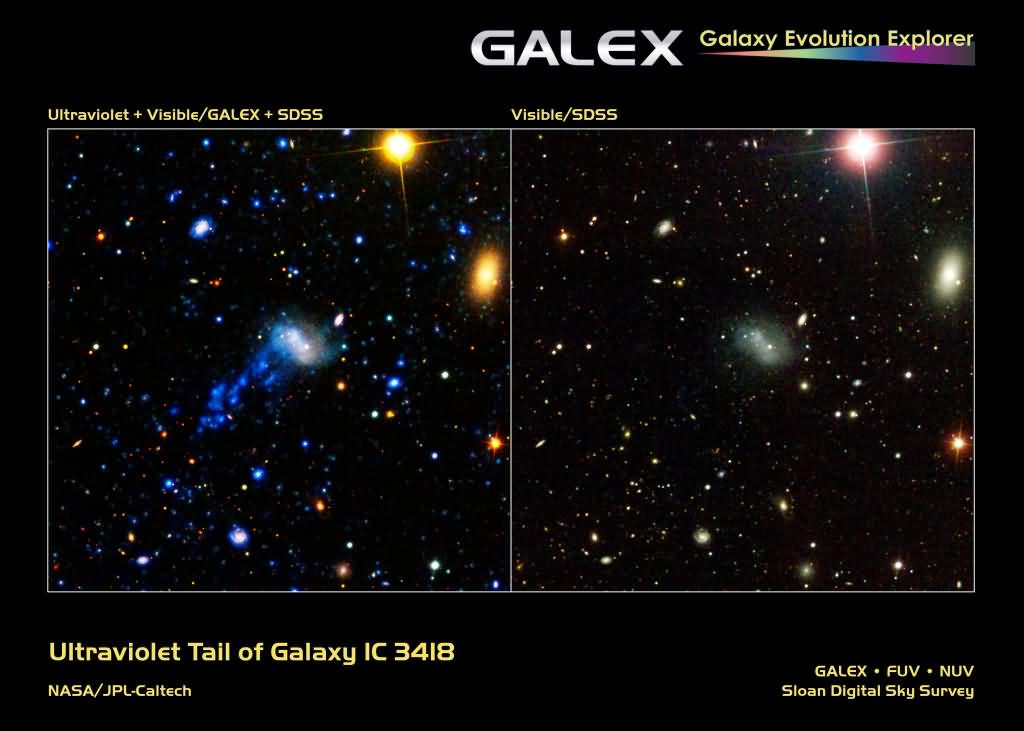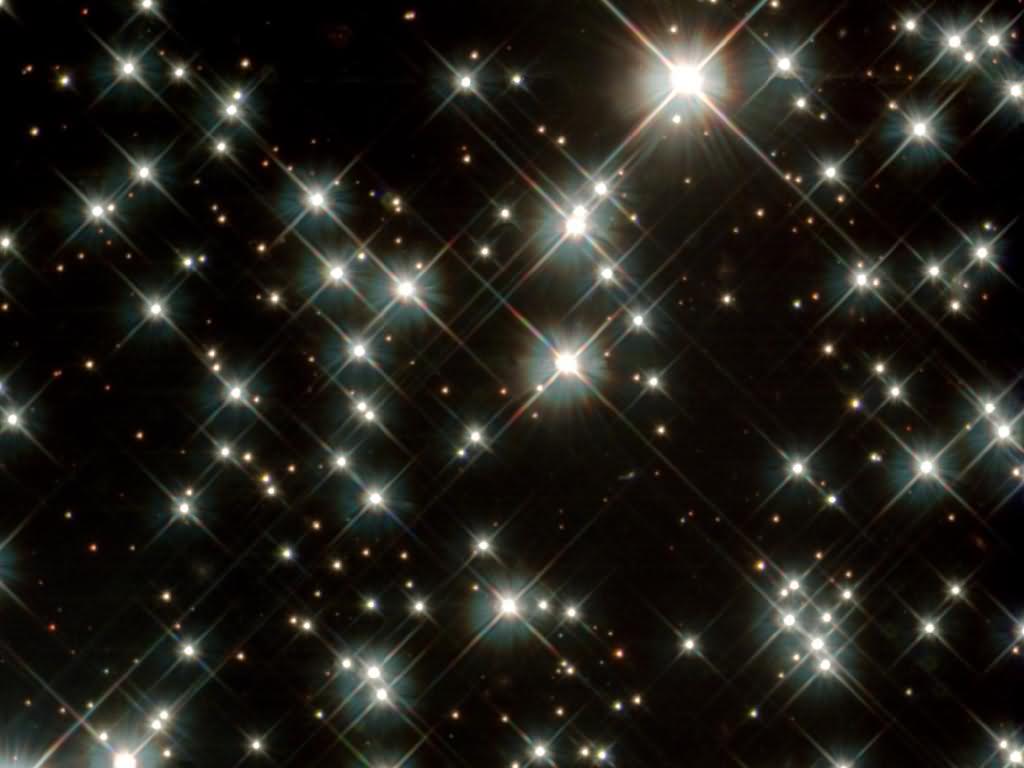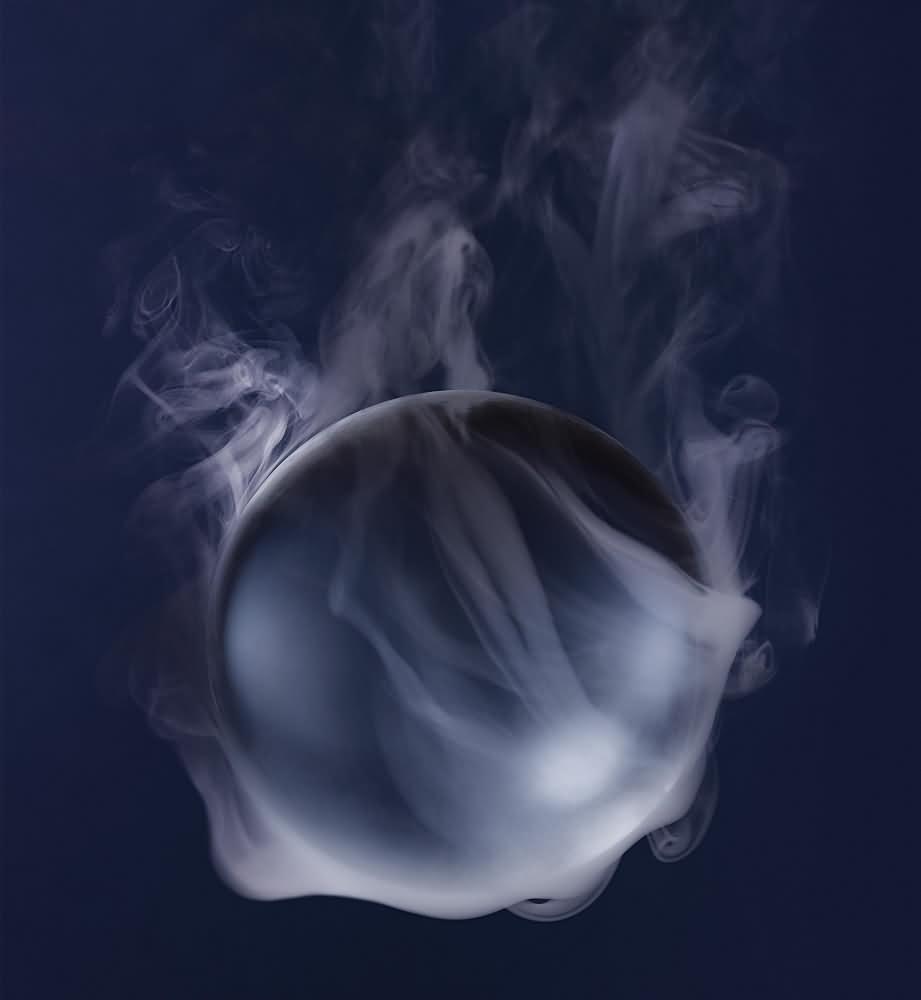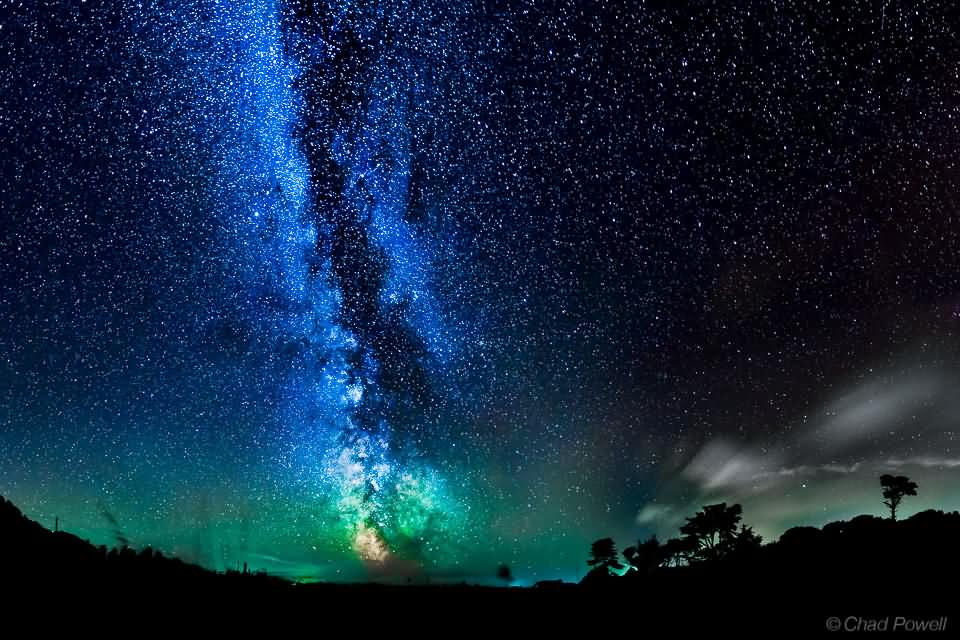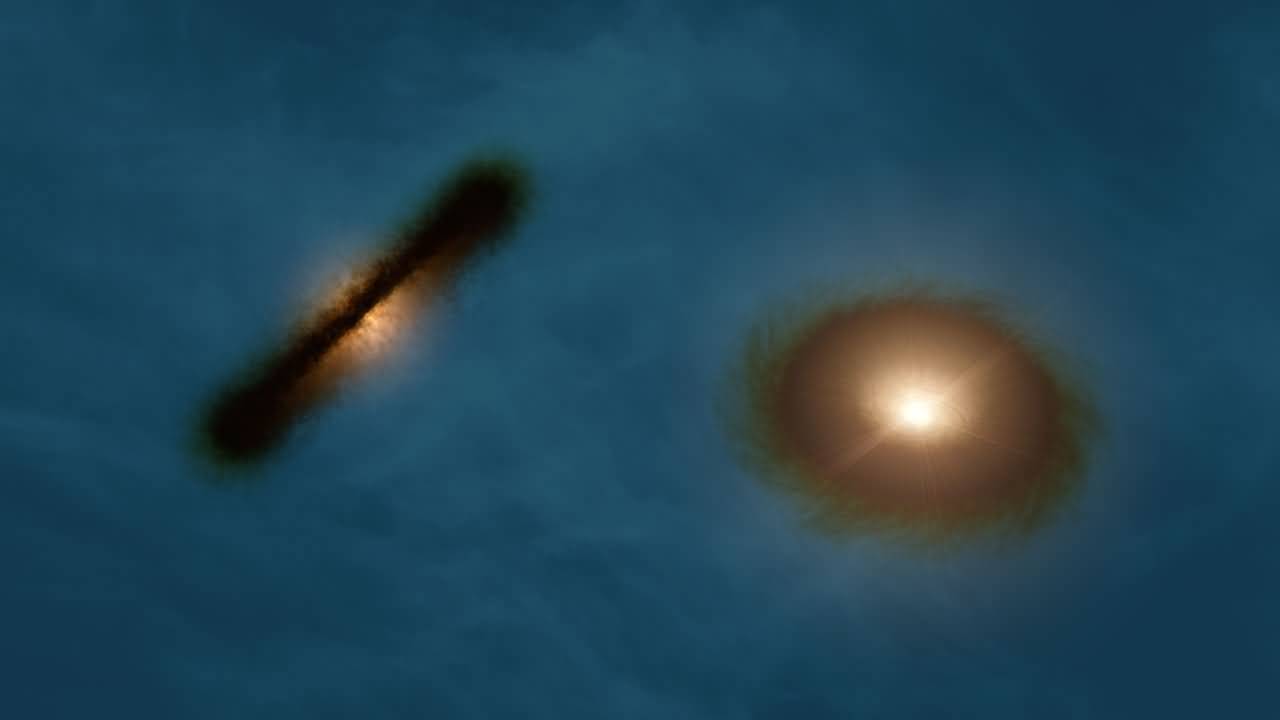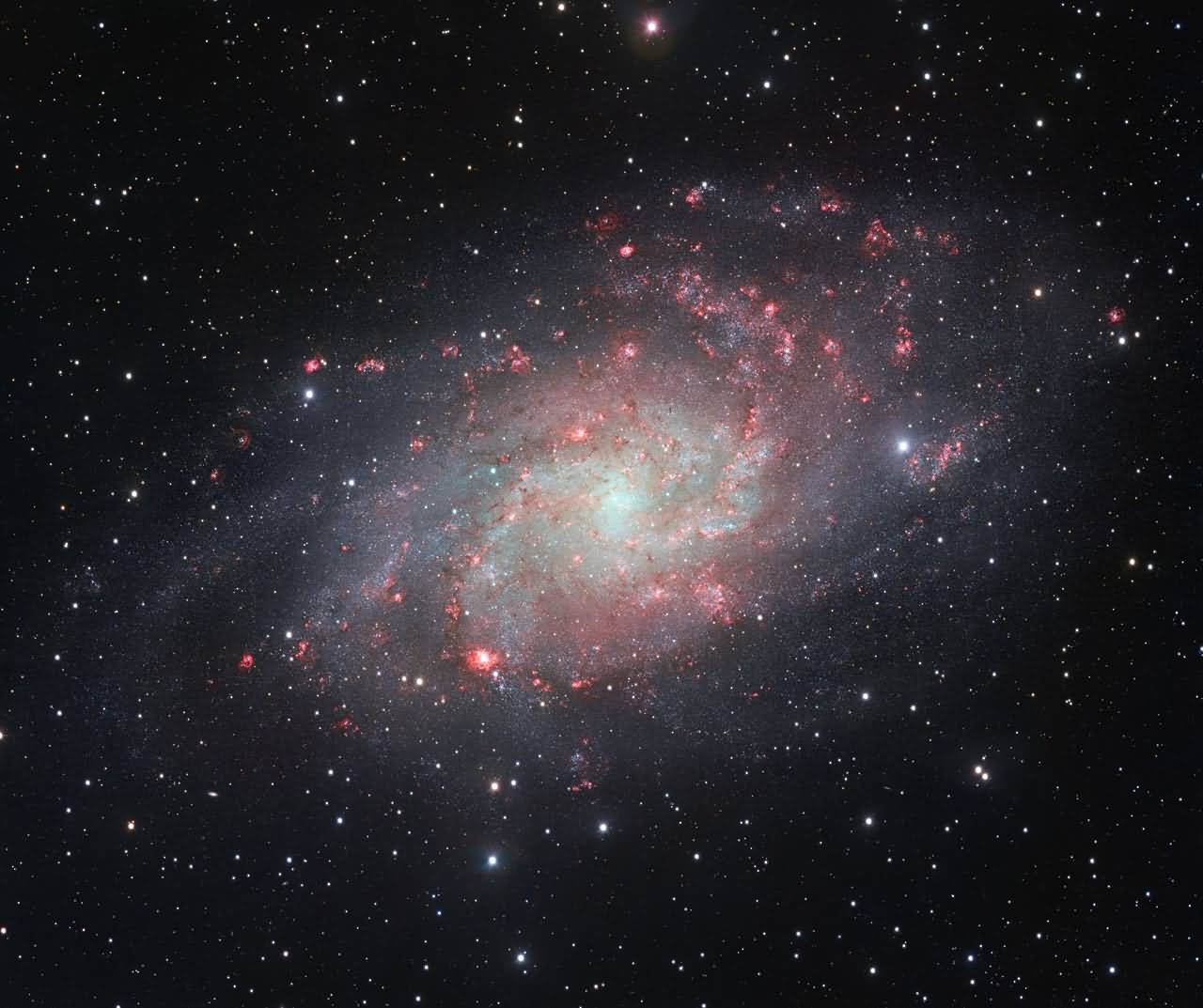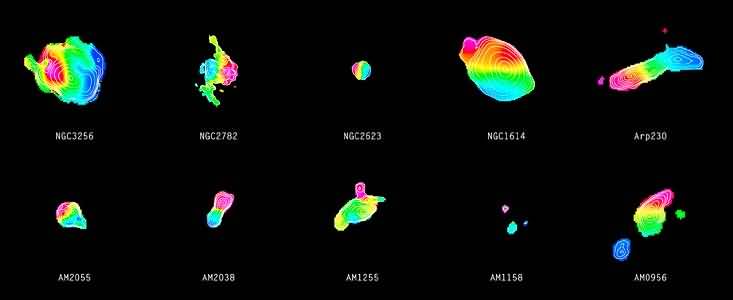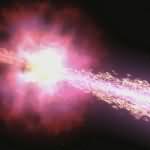Death of a Galaxy

Shots of the galaxy IC 3418. On the left, the remaining gases of the galaxy are being ejected out of the galaxy in ultraviolet light, and on the right, the image we can see with our normal eyes.
The entire universe is based on dualism, and everything changes. After life comes death. From cells to organisms, from animals to us, from stars to galaxies, everything experiences the dynamics of birth and death. This is a transformation. Of course, we mourn and hold funerals for the people we love—sometimes even pets—but these are perfectly normal variations within the universe, and unlike us, they don't possess emotions that change with society and time.
Normally, galaxies die—in essence, they become a new type of galaxy. Galaxies are star-making factories, as we know them. The gases within a galaxy—nebulae—in interstellar space are pulled together by gravity to form stars. Eventually, this gas runs out, and unless the galaxies collide with another galaxy, which allows them to gain fresh gas, star production ceases. But we've never witnessed something like this before: the death of a galaxy.
Researchers using the 3.5-meter WIYN telescope in Arizona and the 10-meter Keck telescope in Hawaii have discovered that a galaxy is in the process of dying. The dwarf galaxy, IC 3418, located 54 million light-years away, is in the process of dying.
Until now, it was unknown what was happening in a dying galaxy. Dwarf galaxy IC 3418 is currently in the process of transforming from an irregular galaxy to an elliptical galaxy that has run out of gas.
What happens if a galaxy runs out of the lifeblood that keeps it alive?
This process is called "ram pressure stripping"—there's no Turkish equivalent; it means something like stripped ram pressure. The gases between galaxies create immense pressure. As a result, the gases within the galaxy are ejected, forming a fireball.
With this new information, we are one step closer to understanding the life cycles of the most abundant dwarf galaxies in the universe.
Erhan Kılıç

